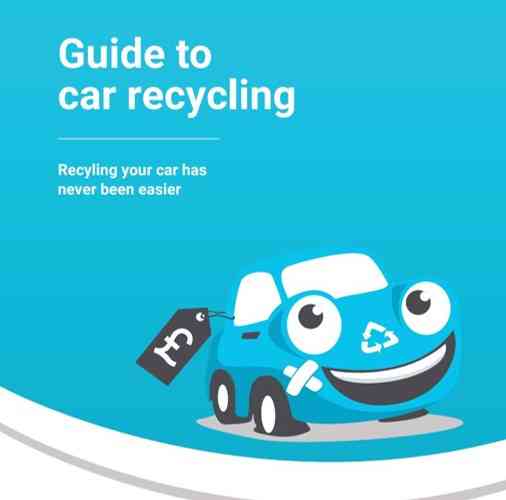Guide to recycling a car from Scrap Car Comparison

2020 has arrived, so have those all-important New Year’s resolutions taking shape in minds across the nation.
Is purchasing a new vehicle on your ‘must do in 2020’ list? Perhaps your existing vehicle has become too costly to run, or you may have realised your car has reached the end of its life. You may want to exchange it to boost your funds and help beat those January blues.
Whatever your reason, have you ever wondered what happens to your vehicle once it has been scrapped?
Scrap Car Comparison, the UK’s first scrap car comparison service, offers a comprehensive overview of the three-step car recycling process in its guide to car recycling: depollution, dismantlement and destruction.
What happens when your vehicle is scrapped?
No matter the condition or reason, when a vehicle is scrapped it will be taken to an Authorised Treatment Facility (ATF) to be recycled.
Whether your vehicle has failed its MOT, been involved in a crash and written off, or has simply reached the end of its lifespan, it will be taken through a three-step recycling process: Depollution, Dismantlement and Destruction.
Current international targets for the scrap industry, as set by the End of Life Vehicles Directive, requires ATFs to recycle at least 95% of a car.
Each part of the recycling process is therefore tailored to the specific materials applicable to that vehicle to ensure that as much as possible can be recycled rather than disposed of.
Step one: Depollution
The first step is depollution; the process of safely removing all hazardous materials and components. This is carried out in accordance with the Environmental Agency Guidelines.
The reasons why vehicles go through this stage include:
- Maximising efficiency for the following steps
- Minimising any potential harm or damage that the materials could cause to either humans, animals, or the environment
Materials removed during depollution
There are several materials that will be removed from your vehicle during the depollution stage, which include:
- Air conditioning gas
- Battery
- Catalytic converter
- Fuel
- Liquefied gas tank
- Coolant, brake fluid and antifreeze, as well as other liquids
- Mercury
- Shock absorber fluid
- Windscreen wash
- Wheels, tyres and lead balance weights
Step two: Dismantlement
Dismantlement occurs once the vehicle is fully depolluted. This stage in the process involves the dismantlement of the three main vehicle components.
What is involved in the dismantlement process?
This process involves the dismantlement of three key components:
- The engine
- The undercarriage
- The main body of the car
The engine
Since the engine is one of the biggest components of a scrap vehicle, it is the first to be targeted for dismantling. Using a hoist, the engine is removed from the car and separated into component pieces:
- The battery (which is put in an acid-resistant, leak-proof container)
- The alternator and alternator belt
- The radiator and fan
- The carburettor
The undercarriage
The undercarriage of the vehicle is the next in line for dismantlement. The car will be lifted into the air, using the ATF’s specialist equipment, and the engineers will set about removing the components beneath the vehicle.
These components include:
- The transmission and exhaust
- The brake pads and rotors
- The drums, shoes and brake lines
- The tyres
The main body
Once the engine and the undercarriage have been removed, the main body of the car can be addressed.
The following internal elements are removed:
- Dashboard
- Seats
- Carpeting
- Circuitry and electronics
Once these elements are removed, the scrap vehicle is no more than a metal shell. From there, the chassis is cut into smaller component pieces using a blowtorch.
Step three: Destruction
There are three steps which make up the destruction process. These ensure the vehicle’s metal is properly recycled and prepared for future uses. The chassis and shell of the scrap car or van is crushed and sent to a metal mill and then goes through the following process:
- Magnetic separation – the scrap car is processed through a magnet that removes any magnetic metal, such as steel, from other materials.
- Detinning – Most vehicles are coated with a thin layer of tin in order to prevent rusting. The tin coating is dissolved in hot caustic soda, removed and any leftover tin reclaimed.
- Melting – The steel is placed in a furnace and melted down. Once it becomes liquid, it is poured into casters and rolled into flat sheets to be reused.
Find out more
For more information on recycling your car, answers to common FAQs or for more detail on the three-step car recycling process, download the guide to recycling a car today.
Read more on
We're on YouTube. Are you following us?
Check us out here.Related Stories
Advertisement Advertisement
Advertisement Advertisement
Advertisement

